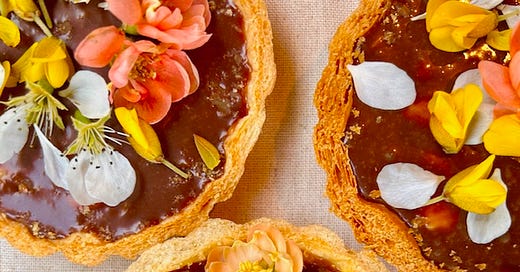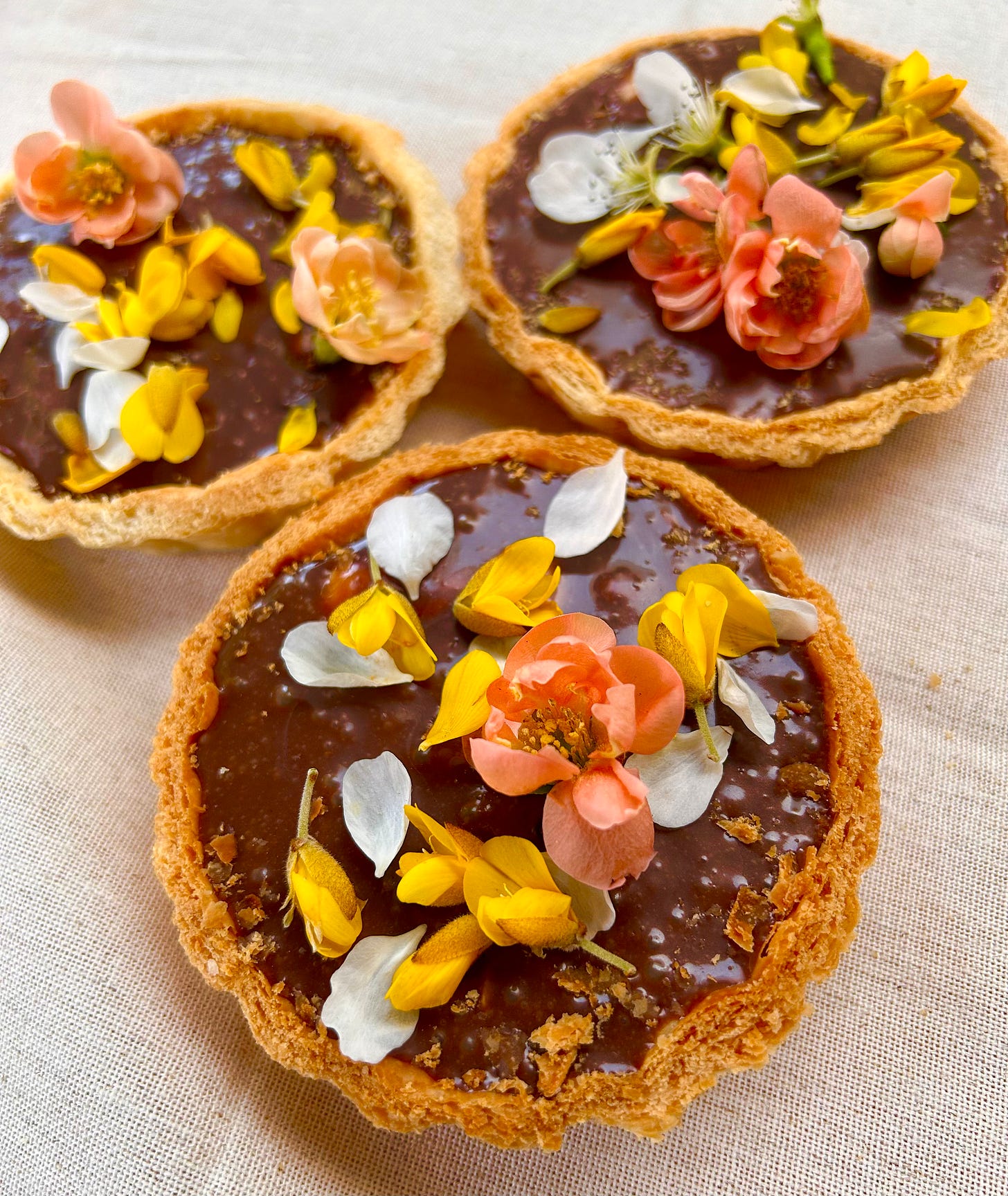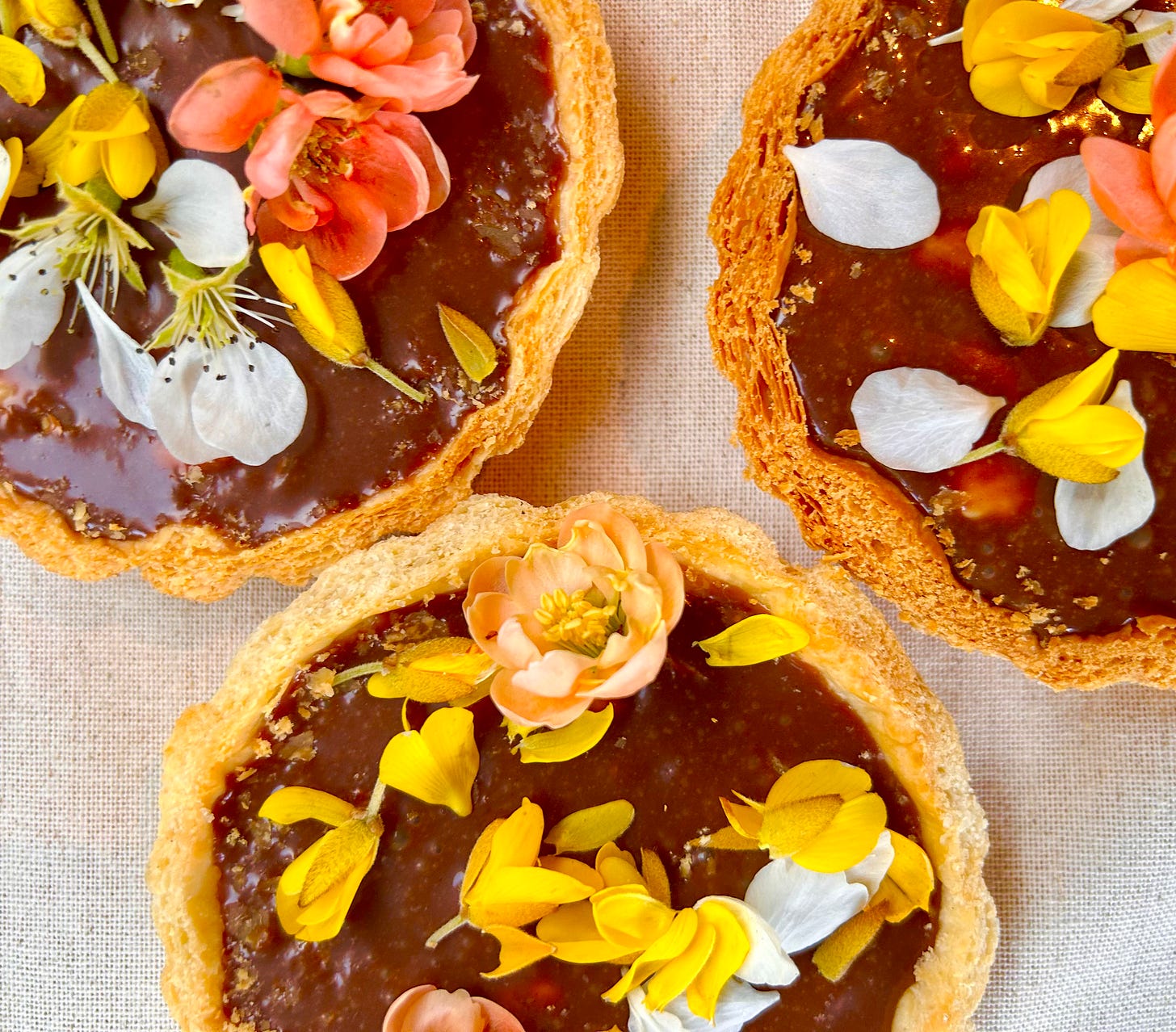Why chocolate Easter eggs?
And the prettiest, easiest, super delicious Easter (or anytime) treat made with your favourite bar
There was no religion in our Easter when I was a kid. It was just a normal Sunday …drenched in sugar. But it was an event. Each year the day began with a handwritten clue - part riddle, part cryptic crossword, part family joke - left at the end of the bed signed off ‘Easter Bunny’. Deciphering it led to the next clue (possibly the washing machine), then the next (in a shoe), until we reached the foil-wrapped finishing line: chocolate eggs.
The chocolate was never fancy (chocolate was just chocolate as far as I knew) but that wasn’t the point. It was the packaging, the ritual, the excitement of the hunt. And then, victorious, the slow consumption of the egg itself. I’d start with the tiniest break - a little hole poked in the top - and work inward, fragment by fragment, not so much eating as dismantling. Maybe I was channeling Charlie Buckett with his birthday bar, which he eked out for a year, though in my case, the egg rarely made it past lunchtime.
But why chocolate on Easter Sunday? Why eggs? Why bunnies laying them? And why, above all, are so many of us completely okay with breaking a Lenten fast by diving headfirst into a 220g bunny made entirely of sugar and cocoa solids?
Long before it was hollow and foil-wrapped, rabbits or more specifically hares were potent symbols of fertility. Stretching back to pre-Christian Europe, hares were considered sacred, associated with rebirth and seasonal renewal, and often appearing alongside goddesses like Aphrodite and the Anglo-Saxon Eostre.
Early Christians folded the egg into Easter as a symbol of Jesus’ resurrection. During Lent, eggs were forbidden but any that were laid were boiled, decorated and even gilded. Come Easter Sunday, they were back on the table: a treat, certainly, but also a theological metaphor referencing a sealed tomb cracked open, new life released.
Chocolate didn’t enter the Easter story until the 18th century. By then, drinking chocolate had long since migrated from Mesoamerica (where it was sacred and bitter) to Europe (where it had was sweetened and a luxury only the very rich could afford).
The first chocolate eggs emerged from France and Germany in the early 1800s: handmade, solid and more than likely tooth-shattering. The invention of moulded hollow eggs, pioneered by Cadbury in the 1870s, changed everything by making mass production possible. Fun fact: the first Cadbury Easter egg was filled with sugared almonds and decorated with marzipan flowers.
Fierce rivalry between chocolate companies in the 19th century sparked a race to outdo one another in elaborate packaging: ornate ribboned boxes, gilded eggs,
hand-piped flourishes. This dovetailed neatly with the rise of the Victorian middle class, who were newly flush and fond of performative generosity. Easter eggs became a kind of social currency; they weren’t just for eating but for giving, with a view to impressing.
As for the rabbit, blame (or thank) the Germans. The Osterhase, or Easter hare, first appears in 17th-century writings, a magical creature who judged children’s behaviour (a bit like Santa) and delivered coloured eggs accordingly. When German immigrants landed in Pennsylvania in the 1700s, they brought the bunny with them. Inevitably, he was commercialised and a perfect storm of Victorian aesthetics and a sugar-fuelled culture created chocolate bunnies.
I’ll be nibbling mine from the top down, as usual, this year. But I’ll also be making more of these divine little tartlets, too. They’re perfect for enjoying over the Easter weekend and ludicrously easy! Just melt down your favourite chocolate bar (I used fruit and nut) or ‘leftover Easter eggs’ (haha) - or to round of any special dinner. They’re ridiculously easy to make, as you’ll see. And sprinkled with edible Spring flowers (DON’T USE DAFFODILS, THEY’RE TOXIC TO HUMANS) they’re pretty as a picture. Happy Easter to you all and may your Eastter egg hunts be fruitful.
Chocolate tartlets with whisky and edible flowers
Keep reading with a 7-day free trial
Subscribe to Pen and Spoon to keep reading this post and get 7 days of free access to the full post archives.






